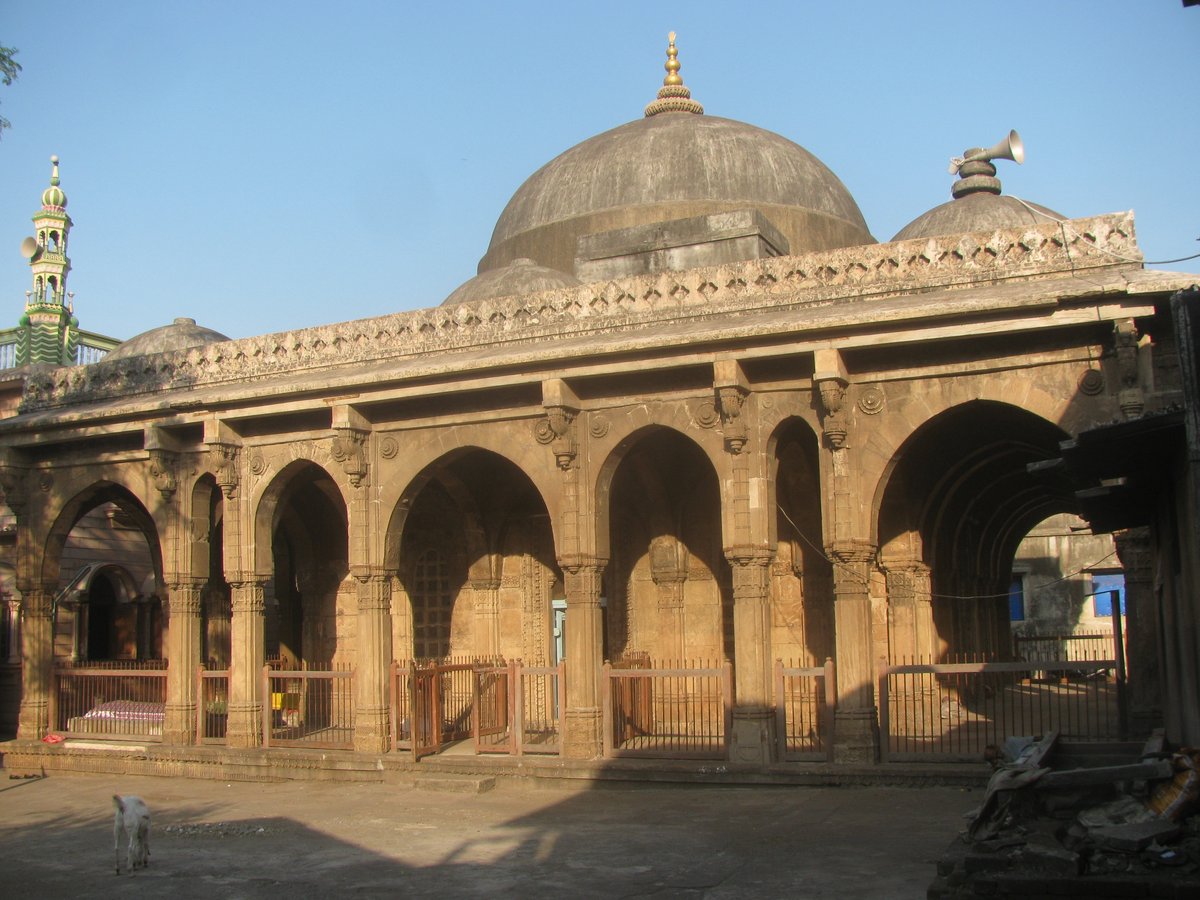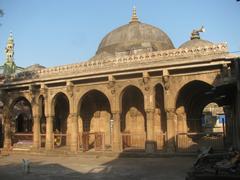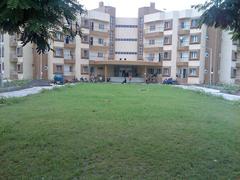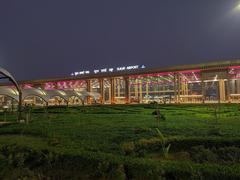
Tomb of Khawaja Safar Sulemani: Visiting Hours, Tickets, and Comprehensive Guide to a Surat Historical Site
Date: 14/06/2025
Introduction
Nestled in the heart of Surat, Gujarat, the Tomb of Khawaja Safar Sulemani stands as a remarkable symbol of the city’s rich Islamic and Sufi heritage. More than a mausoleum, it reflects centuries of spiritual devotion, architectural prowess, and the cosmopolitan history of Surat—a city that thrived as a major port between the 16th and 18th centuries. This guide provides visitors with essential information, including visiting hours, ticketing, accessibility, architectural insights, nearby attractions, travel tips, and answers to frequently asked questions. Whether you are a history enthusiast, spiritual seeker, or cultural explorer, the tomb promises a journey into the pluralistic legacy of Surat (Marvelous Monument Blog; Urban Heritage Conservation in India).
Contents
- Introduction
- Historical Background and Significance
- Surat as a Port City
- Emergence of Islamic Heritage
- Khawaja Safar Sulemani: Historical Figure
- Visiting the Tomb
- Hours & Ticket Information
- Accessibility and Travel Tips
- Guided Tours and Events
- Photography Highlights
- Architectural Features
- Nearby Attractions
- Cultural and Spiritual Importance
- Conservation & Community Initiatives
- FAQs
- Conclusion
- References
Historical Background and Significance
Surat: A Flourishing Port City
Surat’s strategic location on the River Tapi enabled it to flourish as a significant port city from the 16th to 18th centuries. Merchants from England, Holland, Portugal, and Armenia contributed to its cosmopolitan character and diverse architectural styles (Urban Heritage Conservation in India).
Emergence of Islamic and Sufi Heritage
As Surat’s wealth grew, so too did its religious and spiritual landscape. The city became home to numerous monuments, dargahs, and tombs dedicated to Sufi saints, serving as centers for communal gathering and spiritual reflection (Wikidata).
Khawaja Safar Sulemani: The Man and His Legacy
Though historical records are limited, Khawaja Safar Sulemani is revered as a Sufi saint whose tomb has long attracted devotees and pilgrims. The site remains integral to spiritual life in Surat, hosting prayers, gatherings, and annual commemorations (Marvelous Monument Blog).
Visiting the Tomb
Visiting Hours and Ticket Information
- Hours: Generally open daily from 8:00 AM to 6:00 PM. During religious events or festivals, timings may vary—verify locally before visiting.
- Tickets: Entry is free. Donations for maintenance and conservation are appreciated.
Accessibility and Travel Tips
- Location: Situated in Surat’s historical core, the tomb is easily accessible by auto-rickshaw, taxi, or local bus.
- Best Time to Visit: Early morning or late afternoon for cooler temperatures and a tranquil atmosphere.
- Mobility: The site has basic facilities; some uneven surfaces may require caution for those with mobility challenges.
Guided Tours and Special Events
Heritage walks often include the tomb, led by local guides or NGOs, offering in-depth insights into Surat’s history. Sufi gatherings and special religious events provide opportunities for cultural immersion (TN India News).
Photography Highlights
Capture the tomb’s elegant domes, detailed arches, and jali screens, especially during golden hour for optimal lighting.
Architectural Features
The tomb exemplifies Indo-Islamic funerary architecture, featuring:
- Domes and Arches: A prominent dome resting on a square base, with pointed arches that provide elegance and structural support.
- Jali Screens: Intricately carved lattice work allowing filtered light and natural ventilation.
- Ornamentation: Subtle floral motifs, geometric patterns, and possible Quranic inscriptions.
- Materials: Locally sourced stone and lime mortar, typical of the region’s historical buildings.
- Enclosure: Originally set within a walled courtyard, possibly with gardens laid out in the charbagh (four-part) style (Urban Heritage Conservation in India).
Nearby Attractions
Enhance your heritage itinerary by visiting:
- Dargah of Khawaja Dana Saheb
- Old English Tombs
- Dutch and Armenian Cemeteries
- Surat Fort
- Chintamani Jain Temple
- British Cemetery
These sites collectively narrate Surat’s multicultural and mercantile past (Surat Heritage Collection).
Cultural and Spiritual Importance
The tomb is both a place of pilgrimage and a living testament to Surat’s pluralistic traditions. Sufi values of inclusivity and compassion are central, and the proximity to Christian and Armenian cemeteries highlights enduring religious coexistence.
Conservation and Community Initiatives
Heritage Status and Challenges
As a Monument of National Importance, the tomb is protected by the Archaeological Survey of India. However, preservation faces ongoing challenges:
- Shortage of Conservation Architects: Hampering restoration efforts.
- Private Ownership of Heritage Structures: Complicates conservation.
- Funding Constraints: Limited dedicated maintenance budgets.
Community Engagement
Heritage walks, educational programs, and outreach by Surat Municipal Corporation and local NGOs are fostering broader awareness and involvement in preservation (TN India News).
Frequently Asked Questions (FAQ)
Q: What are the visiting hours?
A: Daily, 8:00 AM to 6:00 PM. Verify locally during festivals.
Q: Is there an entry fee?
A: No; donations are appreciated.
Q: How do I reach the tomb?
A: Easily accessible by local transport within Surat.
Q: Are guided tours available?
A: Yes, often organized by heritage groups and the Surat Municipal Corporation.
Q: Is photography allowed?
A: Yes, but please be respectful during prayers and ceremonies.
Q: Is the site wheelchair accessible?
A: Some uneven surfaces; limited accessibility. Assistance may be needed.
Visitor Etiquette and Practical Tips
- Dress Modestly: Cover shoulders and legs; women may carry a scarf.
- Remove Shoes: Before entering sacred areas.
- Maintain Quiet: Especially during prayers.
- Photography: Ask permission before photographing people.
- Best Season: October–March for pleasant weather; avoid monsoon (June–September).
- Facilities: Basic; bring water and wear comfortable shoes.
Conclusion
The Tomb of Khawaja Safar Sulemani is a profound emblem of Surat’s layered spiritual and architectural history. Its preservation—amidst challenges of urbanization—relies on community engagement, responsible tourism, and continued heritage initiatives. Visitors are encouraged to explore the tomb and surrounding sites, participate in guided walks, and practice cultural respect, thereby contributing to Surat’s enduring legacy as a vibrant, pluralistic city.
For curated heritage tours, updates, and exclusive content, download the Audiala app and follow Surat’s heritage community online.
References
- Discover the Tomb of Khawaja Safar Sulemani in Surat: A Visitor’s Guide
- Urban Heritage Conservation in India: Challenges of Conserving Surat’s Tangible and Intangible Heritage
- Visiting the Tomb of Khawaja Safar Sulemani: History, Architecture, and Visitor Information in Surat
- Surat Municipal Corporation Official Website


